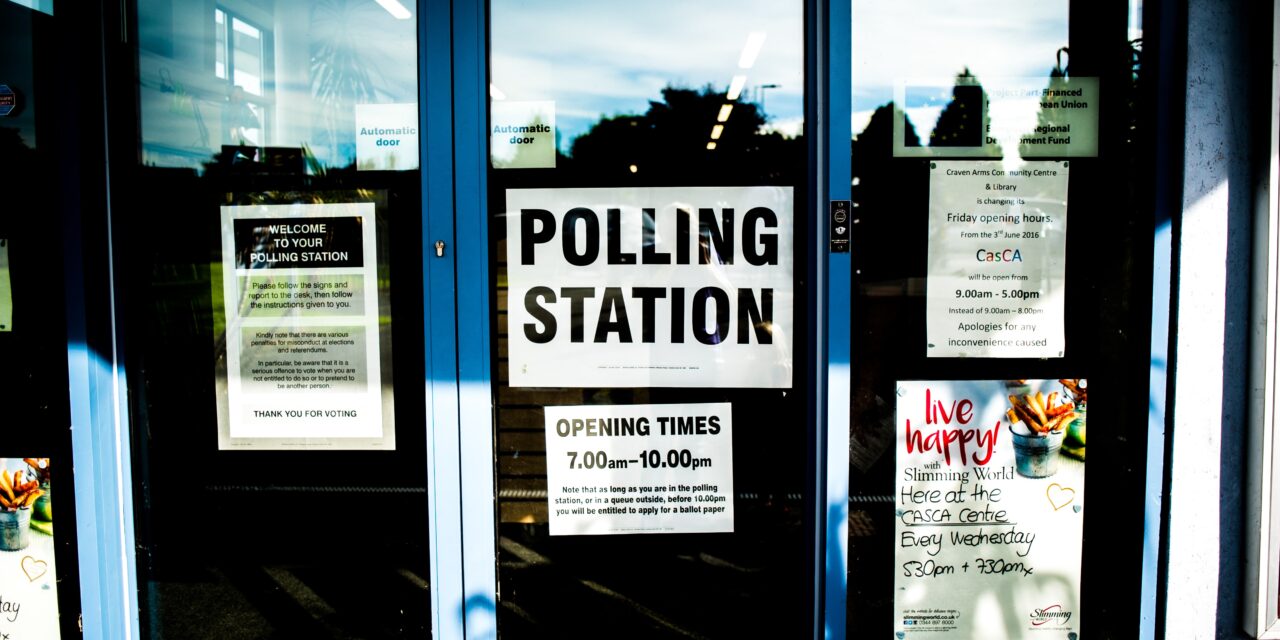Photo by Elliott Stallion on Unsplash
Oct. 21, 2024
Known for his leadership, Winston Churchill, of course, was the Prime Minister of the United Kingdom from 1940 to 1945 during a critical time in world history – World War II.
He was also a decorated war hero and a Nobel prize-winning historian and writer.
But he’s also well-known for an astute observation: “Those who fail to learn from history are doomed to repeat it.”
Voters are more concerned about bread and butter issues than they are about unpopular boutique cultural issues.
President Biden took office with a booming economy but as a result of his dysfunctional polices, the economy worsens by the day. Skyrocketing inflation erodes the buying power of American consumers and bread lines all over the country continue to grow.
It would have behooved President Biden and his like-minded politicians to study history:
President Richard Nixon, 1969 to 1974
In the 1972 presidential election, Richard Nixon soundly trounced George McGovern. Mr. Nixon won 570 Electoral College votes to Mr. McGovern’s 17.
However, with his cover-up of the 1972 Watergate burglary, President Nixon became unpopular as his wage-price controls expired.
There were long lines at gas stations and the Arab oil embargo caused the price of oil to skyrocket from $3 a barrel to $12. The Consumer Price Index almost doubled in 1973 and doubled again in 1974. He couldn’t stop the chaos.
President Gerald Ford, 1974 to 1977
President Gerald Ford assumed the presidency amid raging inflation. He personally was a very nice man, but uncharismatic in public; so he took office while taking unfair criticism for pardoning Mr. Nixon.
The U.S. was in turmoil so he pardoned Mr. Nixon to focus on economic issues. (I later met him in my role as a journalist and later wrote this piece, 5 Attributes of Leadership Are Needed Now.)
Mr. Ford stood before Congress in 1974 wearing a button with the letters, WIN, which stood for the phrase, “Whip Inflation Now.” He asked Americans to plant a WIN garden, to carpool and to lower the thermostats in their homes.
In 1975, the inflation rate soared to 9.13 percent. The inflation rate later dropped to 5.76 percent but it was too little too late. In failing to manage the economy, he lost to Jimmy Carter, 50.1 percent to 48 percent.
President Jimmy Carter, 1977 to 1981
President Carter was largely considered to have positive personal qualities, but his tenure was a failure.
Voters sensed a great deal of uncertainty in decisions coming out of the White House. He was justifiably criticized over his weak negotiating skills with Congress, and his inability to secure the release of the American hostages in Iran.
In March and April of 1980, the inflation rate was 14.6 percent and voters were unhappy.
President Ronald Reagan, 1981 to 1989
In the 1980 election, President Carter looked panicky. He attacked Ronald Reagan as a dangerous right-wing extremist, and claimed his challenger would slash Medicare and Social Security.
In a debate, Mr. Reagan countered by asking voters if they were “better off than four years ago.” Of course, they weren’t.
In essence, voters saw Mr. Reagan as an upbeat optimist and saw Mr. Carter as inept. The result was a massive landslide. The Electoral vote 489 to 49.
Mr. Reagan remains very popular thanks to his sunny disposition, mastery of the economy, and successful political negotiations with his adversary, House Speaker Tip O’Neill.
Contrary to the Carter years, Mr. Reagan’s gross domestic product increased by 3.5 percent and the unemployment rate dropped from 7.2 percent to 5.5 percent.
As a journalist I covered the campaign, and met both Nancy and Ronald Reagan. My sense was that he was indeed charismatic and benefited from his marriage (see: Remembering Former First Lady Nancy Reagan, Valuable Lessons).
President George H. W. Bush, 1989 to 1993
President Bush had the luxury of being the vice president under Mr. Reagan, widely regarded as a charismatic president. But it worked against him because ultimately he didn’t relate to voters nearly as well as his predecessor.
Mr. Bush’s popularity in 1991 soared to 90 percent after the ground war in Kuwait.
The country was not technically in a recession, but voters soon became concerned about the economy. Average voters were shocked when Mr. Bush didn’t understand what they faced at checkout when grocery shopping.
From a report in the New York Times:
“The look of wonder flickered across his face again as he saw the item and price registered on the cash register screen.” The reporter also noted, “Some grocery stores began using electronic scanners as early as 1976, and the devices have been in general use in American supermarkets for a decade.” The implication was clear: The president didn’t have a clue about what life is like for regular Americans.”
He soon got a 64 percent disapproval rating in 1992. Adding fuel to his firing by voters was a famous phrase coined by an advisor to challenger Bill Clinton, James Carville: “It’s the economy, stupid.”
President Bill Clinton, 1993 to 2001
Mr. Clinton’s tenure in office was marked by political missteps and a sex scandal. (He was the second president to be impeached. He was acquitted in 1999.)
In 1993, I recall seeing an advisor to three Republican presidents, David Gergen, appear on a PBS program as he analyzed the dysfunction in the Clinton White House. Soon, Mr. Gergen was asked to become an advisor to President Clinton.
Later, in an interview, Mr. Gergen explained how he helped the president to clean up his organizational mess.
Following the massive Republican political victories across the nation in 1994, Mr. Clinton was forced to work with House Speaker Newt Gingrich, who master-minded the Contract with America.
Together, they successfully pushed for child tax credits, tort reform, work requirements for welfare recipients, and a presidential line-item veto over the federal budget.
As a result, President Clinton was able to lead the nation to the longest-ever, peacetime economic expansion.
By 1998, the U.S. government had the first balanced budget in 26 years, a large budget surplus, gross domestic product growth of nearly 4 percent, an historically high level of home ownership, and the lowest unemployment rate in three decades.
President George Bush, 2001 to 2009
President Bush is known for entering the U.S. to war in Iraq over weapons of mass destruction that actually didn’t exist, and for invading Afghanistan and Iraq.
However, he kept the nation safe after 9/11, which propelled him to be re-elected.
Economically, despite him holding an MBA from Harvard Business School – the only U.S. president with an MBA – he ultimately failed.
The good: Federal spending averaged 19 percent of gross domestic product, which was lower than President Clinton’s record of 19.2 percent.
The gross domestic product under President Bush was almost 3 percent in his first four years, but in his second term it only averaged .05 percent.
Also negative was his record of approving pork and earmarks in countless bills during his first six years in office.
By then, the economy turned sour. His second term was marked by a housing bubble bust, a subprime mortgage crisis, and the Great Recession.
His job creation only averaged 95,000 each month – the worst of any president in four decades. And all his job growth was canceled by the Great Recession.
President Barack Obama, 2009 to 2017
President Obama ended the war in Iraq in 2011. He pushed through healthcare reform, increased support for veterans, and invested heavily in renewable technology.
Mr. Obama’s first priority was to protect Americans – acknowledging the crisis and developing an effective strategic plan of attack – not engaging in political correctness. But he didn’t do it.
Radical Islam has repeatedly declared war on America. Yet, Mr. Obama dismissed ISIS as a mere “JV team.”
He pushed through the catastrophic nuclear Iran deal, which handed over $150 billion to the adversaries. Publicly, Iranians continually shout “death to America.”
In his speech the night before the 74th anniversary of the Pearl Harbor attack, Mr. Obama disingenuously tried to switch to a political discussion on gun control.
Incredibly, he blamed terrorism violence on the Second Amendment. The issue is not gun control; it is about border control and sovereignty to protect freedom for Americans.
Economically, home prices increased 20 percent. Home ownership dropped to the lowest in 50 years.
The nation gained 11.6 million jobs after the Great Recession. But most were low-wage, part-time jobs. When he left office after two terms in 2016, the unemployment rate was 4.7 percent.
The federal debt rose 128 percent.
In other words, President Obama’s dismal record on economic growth – including the gross domestic product, the debt and deficits — is the worst ever. The GDP in his term only averaged about 1 percent.
President Donald Trump, 2016 to 2020
As a result of politics — including phony impeachment schemes and his aggressive approach to opponents — President Trump dealt with the most adversarial situations of any president in memory.
By any measure, his economic record is unequaled. His successes are too voluminous to mention here.
Even left-leaning CNBC reported Trump has set economic growth on fire. Here’s how he did it.
You can see a comprehensive list of his successes in this Whitehouse record.
President Joe Biden, 2021
President Biden’s first year in office was a disaster. As a result, his approval rating among voters plummeted below 40 percent – the lowest of any president after the first year in office.
As of July 30, 2022, the Real Clear Politics average of all the most recent national surveys measuring his ratings put his approval at only 38.6 percent and his disapproval at an ever-worsening 56.2 percent.
Why were voters dissatisfied with him?
Polling reveals voters are upset about these issues:
- White-hot inflation
- Poor handling of COVID-19
- Surge of illegal immigrants
- Ukrainian crisis
- Parents became upset with schools espousing Critical Race Theory
- Defunding of police
- Absence of President Biden’s cognitive skills
- Afghanistan withdrawal
- Killing the Keystone pipeline and high gas prices
Ironically, even many Democrats became disappointed with the lack of progress of President Biden’s agenda on voting rights, inflation, police and immigration reform, COVID-19 and climate change.
The New York Times/Sienna College poll released on July 11, 2022 revealed 64 percent didn’t want him to continue as president.
But Mr. Biden sought re-election, but he was destroyed in his debate with Mr. Trump on June 27, 2024.
As his bleak prospects declined further, Mr. Biden was forced to quit his re-election bid. Hence, the entrance of Kamala Harris. For well over a month she hid from journalists and flip-flopped on her policies.
Conclusion
British statesman Winston Churchill was right: “Those that fail to learn from history are doomed to repeat it.”
The Biden-Harris Administration has made disastrous mistakes — starting with the misguided decisions leading to white-hot inflated prices in every sector of the economy.
Bread and butter issues have been important to voters for at least five decades. Forget all the unpopular boutique cultural issues. Study and learn from the economic records of Presidents Reagan, Clinton and Trump.
Today, with 15 days to go in the 2024 election, the historically most-accurate poll reveals former President Trump leads Kamala Harris in the Battleground states by 3 points.
From the Coach’s Corner, see more Biz Coach public-policy assessments.
“Politics is the art of looking for trouble, finding it everywhere, diagnosing it incorrectly, and applying the wrong remedies.”
-Groucho Marx
__________






